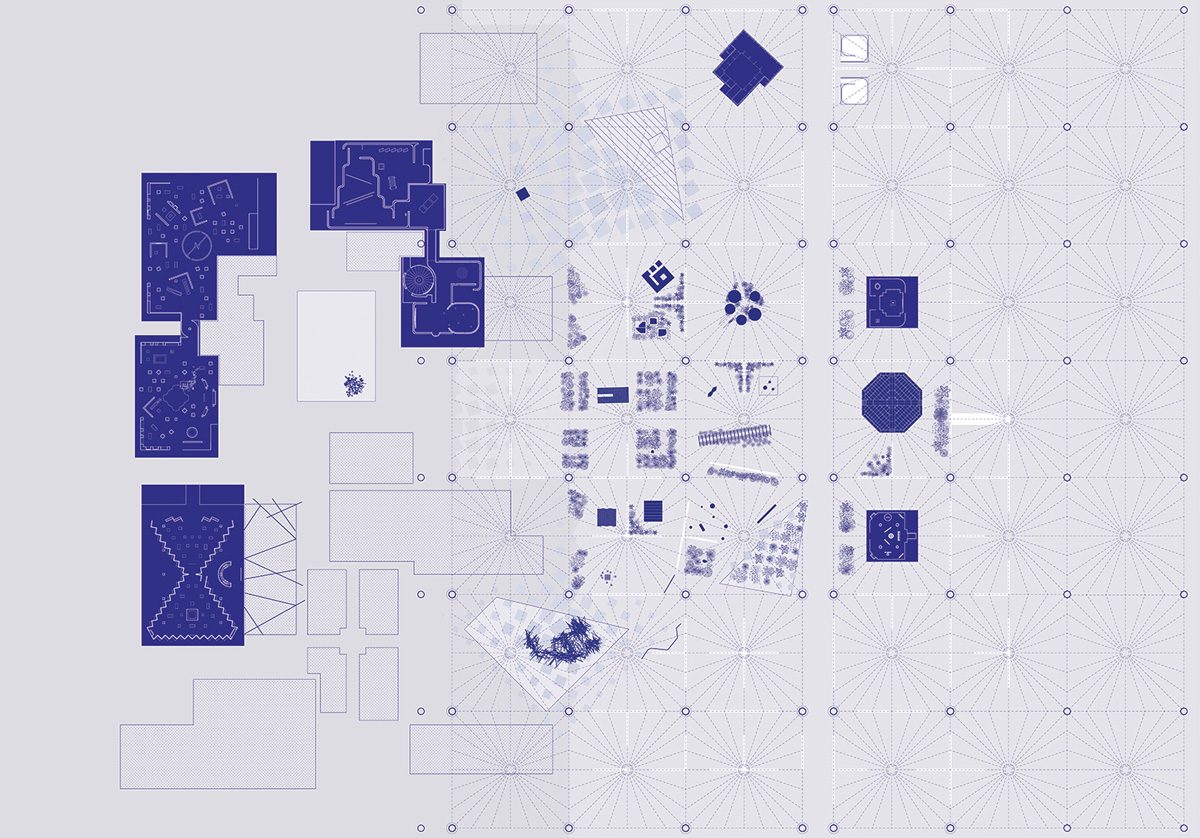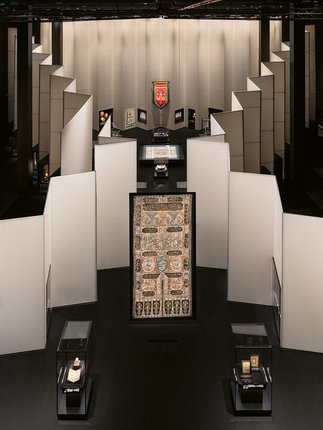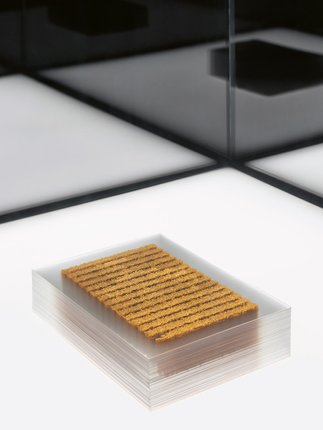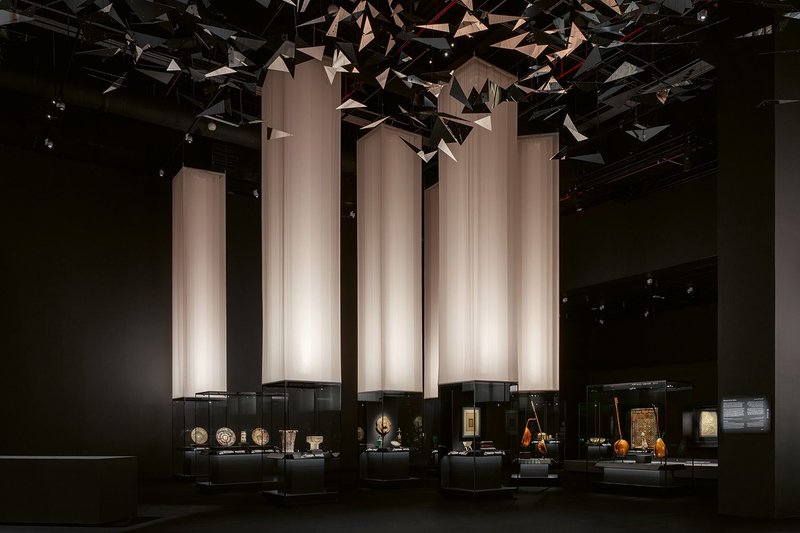The 2025 edition of the Islamic Arts Biennale has once again transformed Jeddah into a hub of global artistic attention. Returning beneath the architectural marvel of the Hajj Terminal at King Abdulaziz International Airport—designed by legendary architect Fazlur Rahman Khan—this year’s event continues to impress with its fusion of tradition, innovation, and cultural storytelling.
Spanning from January 25 to May 25, 2025, the biennale is not just an art event but a sensory journey through Islamic civilization and modern Middle Eastern identity. The iconic canopy structure, famed for its tensile fiberglass roof and natural ventilation, serves as a dramatic backdrop for an event deeply rooted in Islamic heritage.
A Visionary Setup in a Historic Venue
The Italian design studio Giò Forma initially created the physical structures for the 2023 debut of the biennale. Their minimalist cube-shaped galleries remain in place, now supporting a more expansive and ambitious second edition. This year, the renowned Dutch architecture firm OMA, led scenographically by Kaveh Dabiri, has returned with an evolved design approach that emphasizes simplicity, atmosphere, and harmony.
READ MORE: Atlanta Muslim Community Outraged by Trump’s Renewed Travel Ban Order
What sets this biennale apart is its celebration of temporary architecture—a refreshing shift from the region’s long-standing inclination toward monumental, permanent structures. By embracing flexible, sustainable, and economical design principles, the event redefines how Islamic culture can be exhibited in today’s fast-paced world.
Honoring Space, Not Replacing It
OMA’s philosophy was clear: value the existing space. Instead of constructing additional buildings, they utilized the already expansive canopy-covered area, suggesting low-angled landscaping walls to delineate outdoor exhibition zones. These understated modifications allowed for a seamless integration of contemporary installations and traditional exhibits.
A unified aesthetic was achieved using layers of white cotton—both opaque and translucent—providing a consistent design language across the various galleries. This decision allowed artworks to shine under dynamic lighting, evoking calmness, reverence, and focus.
Highlights from Across the Islamic World
Among the standout sections, AlMadar (The Orbit) presented over 35 global institutions, including Oxford’s History of Science Museum, the Vatican Apostolic Library, and Cairo’s Museum of Islamic Art. Visitors marveled at ancient celestial instruments, maps from the Ottoman era, and intricate Alhambra tiles, all beautifully arranged in OMA’s purpose-built display structures.
In AlMuqtani (Homage), scenography bridged two distinct collections—the opulent Al Thani Collection and the martial Furusiyya Art Collection. Walls of dual-layered fabric stepped inward and outward to host precious objects, giving each piece visual prominence without overwhelming the viewer.
The exhibit’s opening gallery, Al Bidayah (The Beginning), delivered a powerful introduction with large-scale religious artifacts, including the sacred Kiswah, the cloth that drapes the Kaabah. Displayed for the first time outside Mecca, its inclusion marked a poignant moment in Islamic exhibition history.
Contemporary Reflections and Spiritual Spaces
A particularly memorable installation was British architect Asif Khan’s shimmering Qur’an, crafted from 604 ultra-thin sheets of glass gilded with 23-carat gold. The design emerged from Khan’s reflection on how homes and mosques physically relate to the Qur’an. His final piece—a spiritual centerpiece—was elevated through its positioning in a subtly sloped circular chamber designed by OMA.
In a parallel competition for a temporary musalla (prayer space), the winning entry by East Architecture Studio used an eco-conscious material formed from recycled palm fronds. Engineered with AKT II, this innovative plywood alternative enabled the team to assemble a mosque-like structure in less than two months. Inspired by the traditional homes of Jeddah’s Al Balad district, it highlighted the possibility of relocating culturally resonant architecture with minimal disruption.
More Than an Art Fair
Unlike traditional art fairs or biennales, this event functioned more like a temporary museum—a place where history, faith, and modern design converged. Carefully curated exhibits, respectful scenography, and intuitive layouts gave even casual visitors a profound sense of connection to Islamic heritage.
As Saudi Arabia progresses towards Vision 2030, cultural programming like the Islamic Arts Biennale signals a significant shift. It’s no longer just about economic diversification but also about asserting the kingdom’s rightful role as a global cultural leader and guardian of Islamic history.
As Jeddah stakes its claim on the world’s cultural map and Abu Dhabi prepares to unveil its much-anticipated Guggenheim, the Islamic Arts Biennale has demonstrated that visionary impact doesn’t always require grandiosity—just authenticity, purpose, and respect for the past.
By the Numbers:
Total site area: 120,000 m²
Scenography coverage: 70,000 m²
Interior exhibition space: 10,000 m²
Outdoor & landscape installations: 60,000 m²
Project Team & Credits:
Client: Diriyah Biennale Foundation
Exhibition Design: OMA
Lighting Design: Les Éclaireurs
Scenography & Art Production: Black Engineering
Display Cases: Colin Morris Associates
Art Handling: Hasenkamp
Mounts & Supports: Cubic
Signage & Wayfinding: Penguin Cube
Conservation: Plowden & Smith
Case Fabrication: Goppion
Graphic Design: Morcos Key
Musalla Architecture: East Architecture Studio













